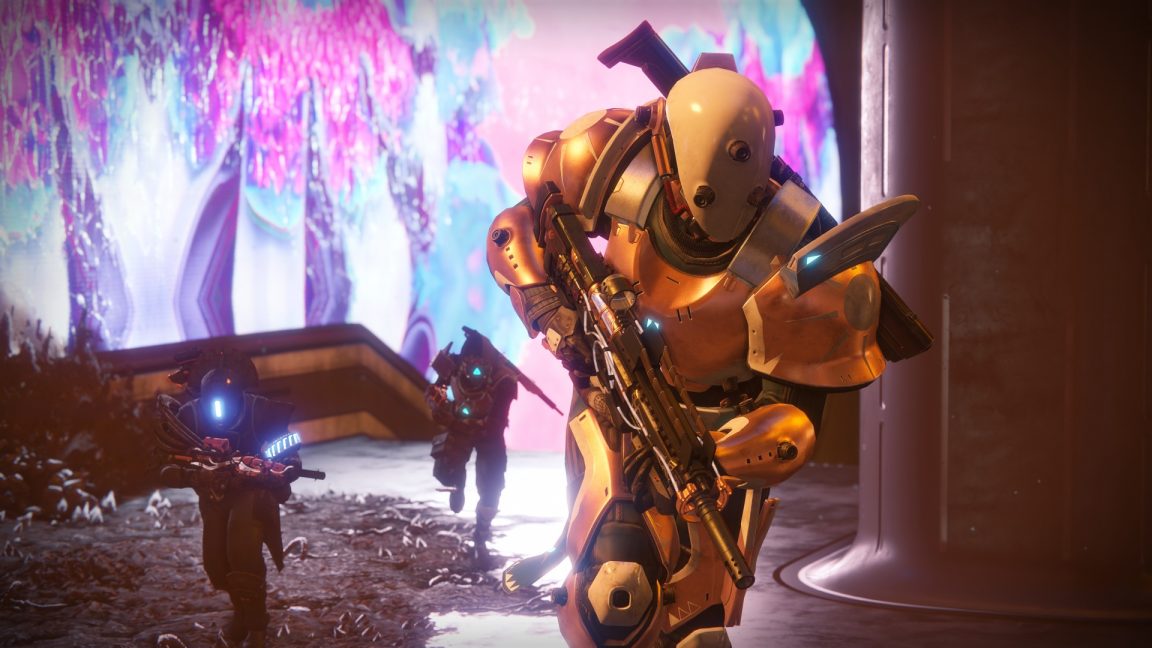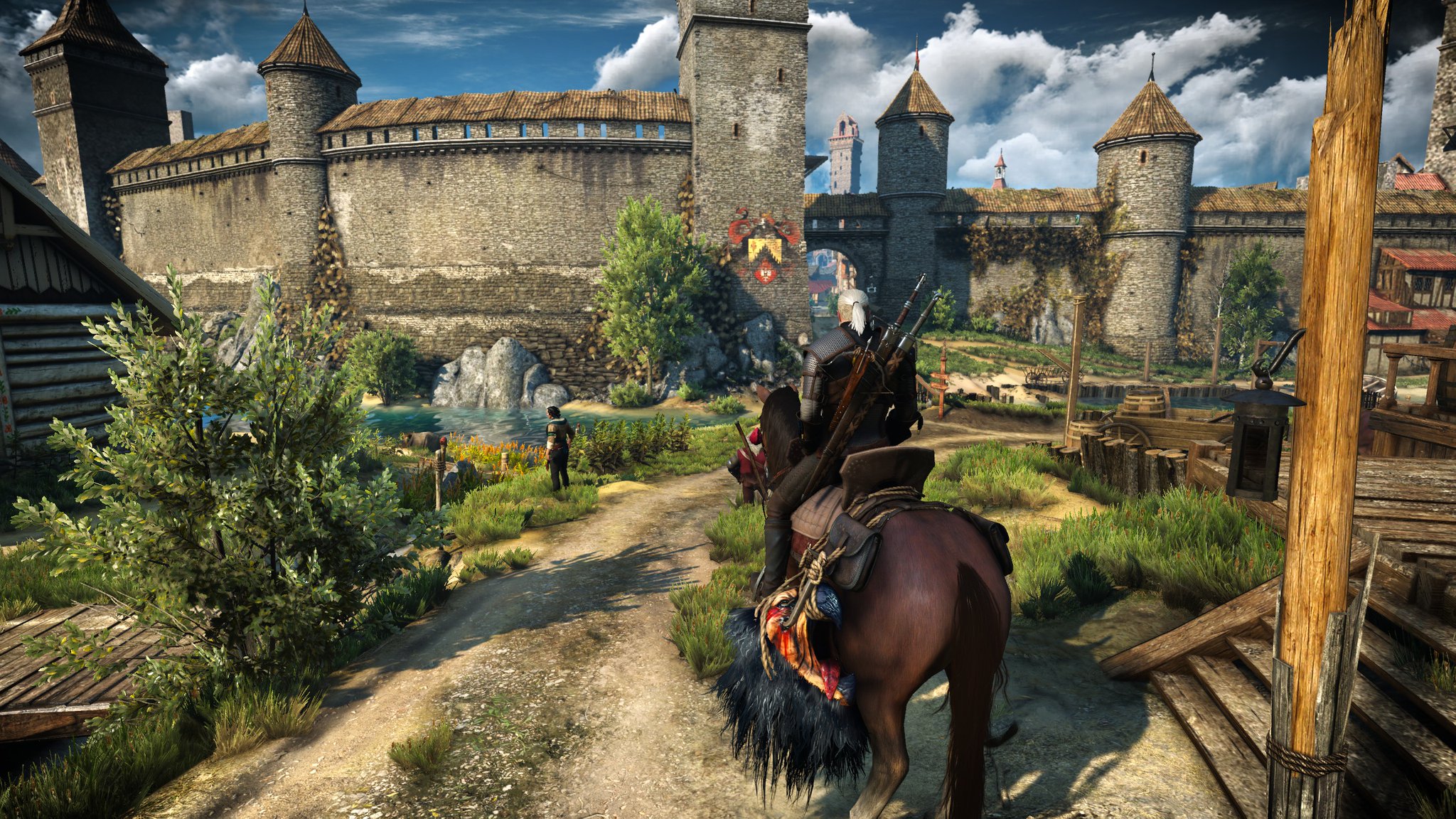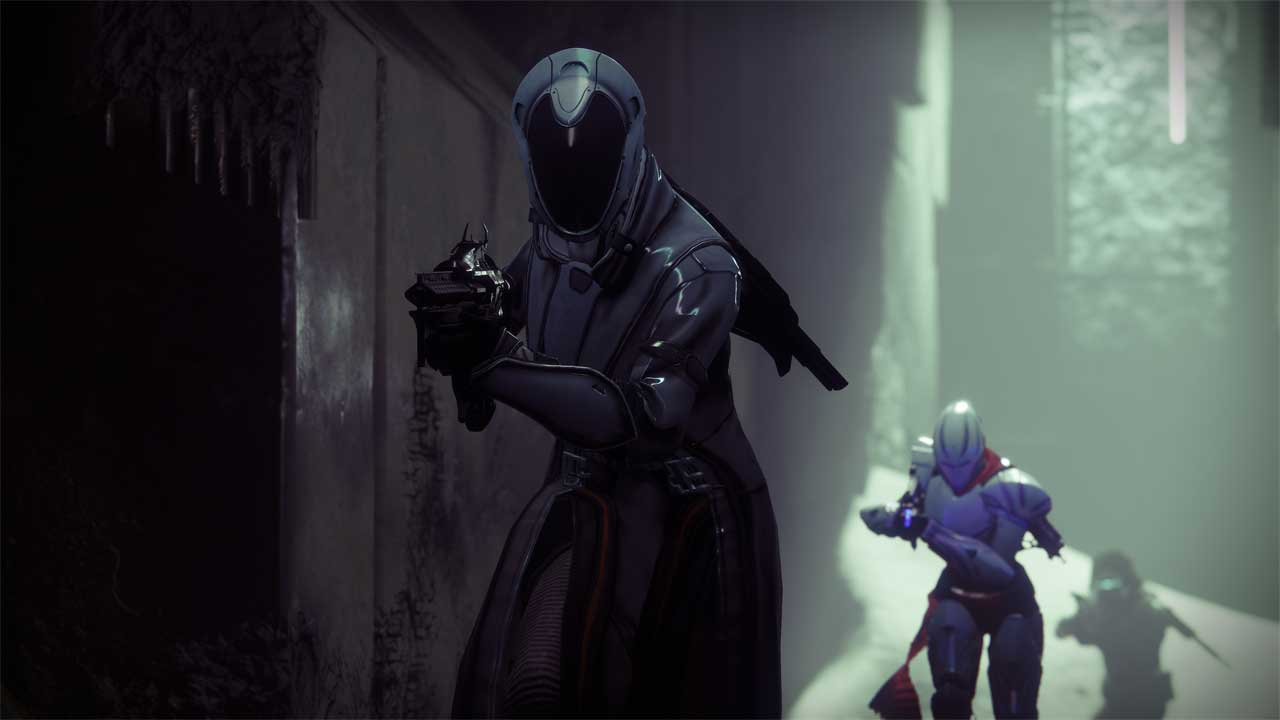
While watching the reveal of Destiny 2’s first expansion Curse of Osiris – and yes, I still keep track of the game despite being utterly bored with it – I kind of knew what to expect. Bungie would regale us with the tale of Osiris, a Warlock steeped in lore and who’s never really had much exposure in the franchise till now. A new cinematic showcasing Osiris’s Ghost, voiced by the lovely Morena Baccarin of Firefly and Homeland fame, would debut and have some “shocking” revelations. This would essentially be the set-up for the next DLC and then we’d have a neat reveal stream of what fans could expect. However, I knew that when the actual stream would start and the Guardians played by Bungie would venture out into Mercury and the new Infinite Forest what the complaints would be.
“Reskins!” “Reused assets!” “Copy and paste!”
"“Reused assets” is an argument that comes up a lot in video games. I’ve seen it before when animations where used for Call of Duty: Ghosts that seemed to directly resemble the ending of Call of Duty: Modern Warfare 3."
And to be honest, these have been complaints for a pretty long time. Well, at least they were in the first year or two of Destiny 1. But then everyone was sort of okay with it when raid armour made a comeback in Age of Triumph? Oh but then people got upset again when assets were reused for weapons in Destiny 2’s first Iron Banner. Don’t do too much Reddit kids. It’ll melt your brain.
Why was the exact same message seen for Curse of Osiris? First off, the social space from Destiny 1, namely the Lighthouse, is now available to all. It’s definitely been spruced up, don’t get me wrong, but it’s pretty much the same structure from the first game…except now everyone could just pay money to get to it instead of going flawless in Trials of Osiris. Mercury itself is pretty similar in aesthetic to the Burning Shrine PvP map from Destiny 1 but that was more or less expected (and to be honest, there’s a whole lot we didn’t see).
It’s when travelling into the Infinite Forest that the “reused assets” complaints started to take off and exploded when it was revealed that there would be no new raid. Instead, Curse of Osiris would take players back to the Leviathan for a “raid lair” which is a smaller raid experience. There are new challenges, a new boss, more puzzles and new loot to earn but you’d be forgiven for thinking that Bungie was going to make a brand new raid. Then again, we didn’t really see inside of this one all that much so there’s no telling how different it actually is from the rest of the Leviathan.
“Reused assets” is an argument that comes up a lot in video games. I’ve seen it before when animations where used for Call of Duty: Ghosts that seemed to directly resemble the ending of Call of Duty: Modern Warfare 3. When Destiny 2 was announced, the main argument was just how similar it looked to Destiny 1. Then again, when you look at a game like Fallout 4, the argument wasn’t that it looked different from Fallout 3 and New Vegas but that it didn’t look that much better. The fact that the gameplay had been pretty simplified to feed into a loop of “explore, kill, loot, repeat” didn’t help either.
"When thinking about reused assets, I’m often reminded of the practice of asset-flipping."
In the case of all of these games, the real argument wasn’t that the games reused assets or looked too similar to their predecessors but that they didn’t really feel like a huge step forward. And in areas where they could have made major strides, they felt significantly dumbed down.
Let’s take another example – Diablo 3: Reaper of Souls. The expansion launched with something called Nephalem Rifts. These were challenging dungeons with random assortments of enemies and tile sets that could be farmed for better loot. The tougher version of those were the Greater Rifts, more action-packed Rifts (depending on the difficulty) that required you to finish in time to upgrade your Legendary Gems. But these Rifts were basically reused assets from the entire game. Think of an area in an act or an enemy type and it appears in a Rift, though Blizzard has been adding new enemy types and tile sets since the game’s launch for free.
Granted, the randomization of these aspects and how they’re mixed up along with different enemy modifiers and totems adds to the overall fun factor. But as much as I love Rifting in Diablo 3, I can agree with players who simply don’t like them being the be-all, end-all end-game. Then again, there are a large number of people who will keep coming back to Diablo 3 and loving it because everything else – from the combat to the loot drops and the overall gameplay (unless you’re hunting for Primal Ancients, in which case lord help you) – is top-notch. That’s a different subject altogether though.
You could really go on from that point though. Tom Clancy’s The Division has an upcoming mode called Resistance which reuses enemy character models that have been in the game since day one to present a new, wave-based challenge for experienced players. Warframe’s environments also rely on tile sets that are arranged in interesting ways with unique objectives but still pretty similar from area to area regardless of the planet you’re on.
"Yes, it’s kind of lame that many of Destiny 2’s bosses and enemies are essentially recycled from the first game, just bigger and with a few new bells and whistles."
When thinking about reused assets, I’m often reminded of the practice of asset-flipping. Developers often times purchase asset packs and use them during development as placeholders while the final assets continue to be worked on. They can also serve as starting points when creating original character models or when you don’t want to spend a bomb on creating stuff like trees or wall textures. The name “asset-flip” is used in a more negative sense though.
It’s when developers use assets from a package and re-package it into a full game. The amount of effort used in this case is circumstantial but you need look no further than Silicon Echo Studios which recently saw 200 of its games removed for being low-quality and relying almost entirely on existing Unity assets. It was a means for players to effectively boost their profile levels and sell as cheap trading cards but even in terms of actual gameplay content, it was all the same.
That’s not really what’s going on with games like Destiny 1, Destiny 2, Call of Duty, Diablo 3 or really anything else. Yes, it’s kind of lame that many of Destiny 2’s bosses and enemies are essentially recycled from the first game, just bigger and with a few new bells and whistles. However, putting together all the environments – even if assets like the European Dead Zone and Mercury existed beforehand – is not easy. Creating all these different gameplay systems, cutscenes, animations, weapons, Supers, sub-quests, Adventures, Public Events and what have you while ensuring they all run with nary a hitch is tough. People tend to say that micro-transactions and DLC are necessary because the cost of development is ever-soaring and companies need to have additional revenue streams. So why is the practice of reusing assets to cut down on development time and effectively save money so frowned upon?
I think there’s a fine line somewhere to all of this. I’m not someone who will complain about reused assets or environments so long as they’re used in a clever way. The Witcher 3: Wild Hunt reused a number of environments and areas that I had already explored for its story mode but it didn’t bother me because the overall gameplay and direction was different. I mean, sure, the same character models appearing in more than one place was kind of creepy but I’m a reasonable person when it comes to a game’s overall unique content.
"Maybe it’s just that some developers get a free pass for doing this kind of thing while others don’t."
The recent ECHO didn’t bother me with its pristine albeit repetitive setting and continuous usage of the same character model because it was clever as all hell. I didn’t pitch a fit upon learning that Horizon: Zero Dawn had “corrupted” enemies with some different attacks or similar looking grassy/snowy environments because there was always a unique direction to what I was doing. Life is Strange: Before The Storm uses the very same aesthetic as the first game with some similar-looking character models and environments but it’s still a brand new story that I know will make me sad. In a good way, that is. Have you kept track of the number of times that Kamurocho appears through the various Yakuza games? Give it a shot and see how that goes.
But I can understand players who feel that FIFA 18 doesn’t look like all that big of a step up from FIFA 17. Or the Madden games or NBA 2K titles that make small improvements to visuals but look fundamentally the same while pushing some new form of micro-transaction or the other. Ditto for when Assassin’s Creed Brotherhood was announced to be releasing just a year after Assassin’s Creed 2 and annoyed its fair share of players with the number of similarities in assets. Even then Assassin’s Creed Brotherhood ended up being a fantastic game with many interesting gameplay hooks and ideas despite the “similarities”.
Maybe it’s just that some developers get a free pass for doing this kind of thing while others don’t. It could be that Bungie’s reputation of over-hyping and under-delivering is just a pale spectre that looms over their every work. I mean, did you see the number of complaints about Halo 3 not looking all that better than Halo 2, never mind all the talk about how they were initially meant to be one game?
It’s probably the fact that for all the asset re-use and repackaging that Destiny 2 does, there just isn’t enough compelling gameplay this time around to really excuse it, especially when players have already seen so much of it in Destiny 1. Oh, and it also doesn’t help that asset reuse cuts down on development time and cost but Bungie is still pushing micro-transactions (along with that neat little cooldown on XP gain that’s almost meant to push you towards buying Bright Engrams) and DLC content that’s certainly not cheap.
"At the end of the day, developers have to walk a fine line between developing interesting environments that players will hopefully admire while also re-using certain assets to save money."
There may be no “right” or “wrong” way to reused assets unless it’s a blatant asset-flip that’s trying to game the consumer. At the end of the day, developers have to walk a fine line between developing interesting environments that players will hopefully admire while also re-using certain assets to save money. I can’t help but think back to this one cave in Destiny 2 on Nessus (which Zero Punctuation also pointed out in his review of the game). It was Vex architecture but with intricate lines and patterns that were not at all similar to each other. The art direction in these aspects of the game is mesmerizing and takes lots of work. How often do you think such details will make it into a game when there’s a huge time crunch to work with?
You could debate all you want about Mercury being finished or the Curse of Osiris being developed before Destiny 2 launched. It’s just not impossible to make everything unique. I mean, I’d like developers like Bungie to try but it’s not a mandatory requirement to my enjoyment of a video game. Hopefully, as time goes by, developers like Blizzard Entertainment, Bungie, Ubisoft Massive (and all the other Ubisoft studios), Bethesda Softworks and whatnot can breathe a little easy knowing they won’t be crucified for not making new assets completely from scratch, year in and year out, that may or may not be appreciated.



















